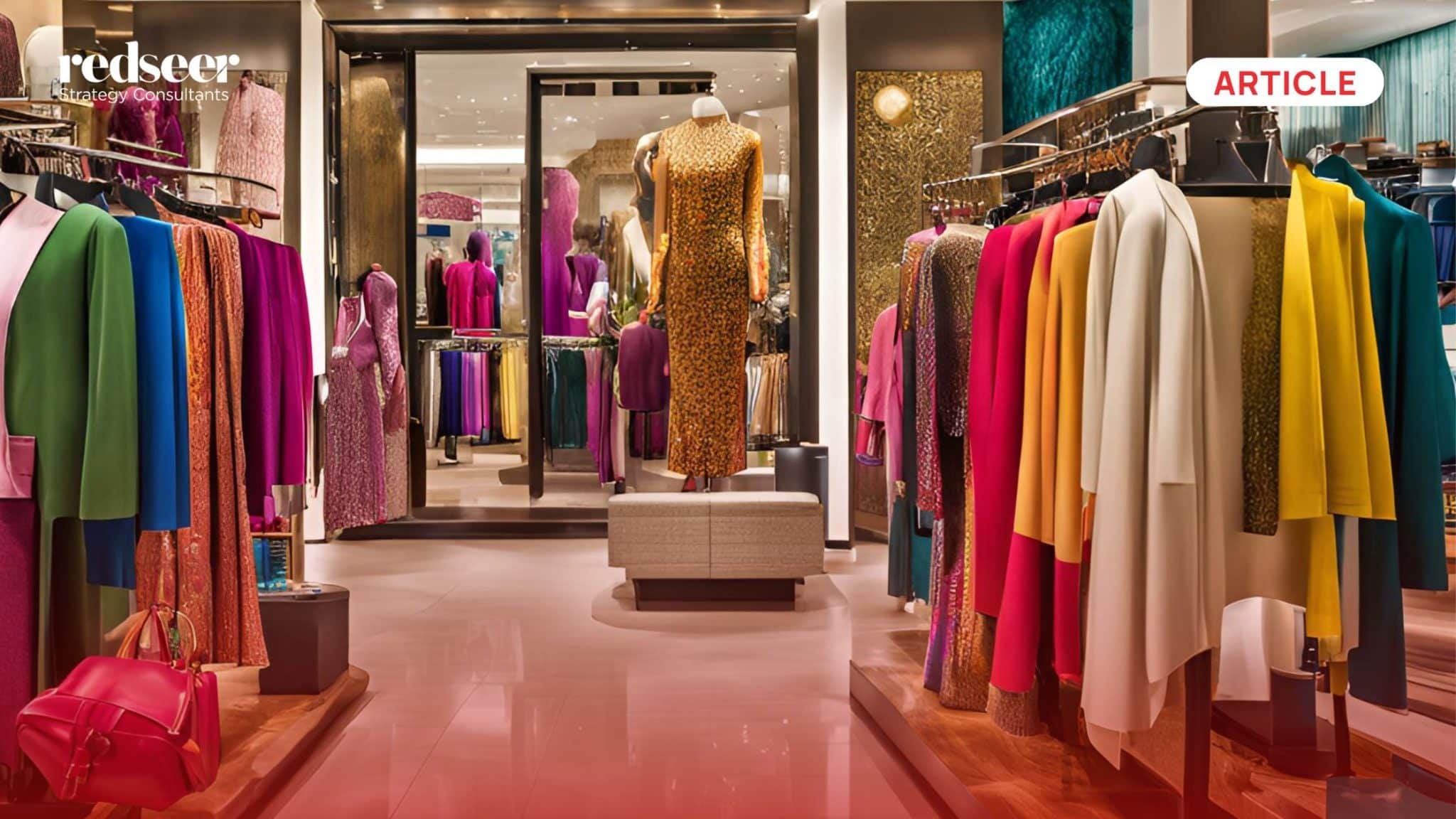
The Evolution of Saudi Arabia’s Fashion Landscape
From the evolving retail landscape to the booming e-commerce sector, Saudi Arabia’s fashion industry is undergoing significant transformation. In this newsletter, we’ll explore how these dynamic changes are reshaping the Kingdom’s fashion ecosystem, with a special focus on the sector’s growth from 24% of retail share in 2019 to a projected 27% by 2028.
We solve the strategy behind scale!
What to expect in this article:
- Fashion’s accelerating growth in Saudi retail
- Pillars supporting this growth
- The future of D2C fashion brands in KSA
- …And the revitalization of local fashion and modest wear trends
Read on for a detailed analysis of how Saudi Arabia is revolutionizing its fashion industry, from the rise of digital platforms to the emergence of innovative Saudi designers blending traditional aesthetics with contemporary style.
1.Fashion has been a faster-growing segment in the overall retail market propelled by women revolutionizing the local fashion industry

The fashion sector in Saudi Arabia is experiencing remarkable growth, positioning itself as a dominant force within the broader retail landscape. It is set to grow from 24% in 2019 to 27% by 2028. This rise is significantly driven by the increasing influence of women in the fashion sector. This transformation reflects broader cultural and social changes, with women actively shaping the direction of the industry and popularizing local styles.
2. E-tailing specialists & omnichannel have been strong pillars of this growth; CBT share is high in Fashion due to demand for Fast Fashion

The digital fashion marketplace in Saudi Arabia is characterized by a robust dual-channel approach. E-tailing platforms like Namshi, Shein, Temu, and Ounass account for 50% of the online fashion market in KSA, while omnichannel players like Amazon, Noon, and Centrepoint hold a 30% share.
Additionally, cross-border transactions (CBT) in fashion have seen a notable rise, with the share increasing from 26% in 2022 to 28% in 2023. This growth is driven by the popularity of fast fashion, with brands such as Shein, Temu, and Trendyol offering a wide array of affordable and trendy products that meet the high demand among Saudi consumers for modern, budget-friendly clothing.
3. D2C brands to be a strong future growth pillar for Fashion

Direct-to-Consumer (D2C) brands represent a significant growth opportunity in Saudi Arabia’s fashion landscape, as evidenced by the market maturity assessment. The chart positions KSA alongside the UAE as markets with high D2C penetration relative to their overall online retail presence, indicating strong consumer acceptance of the D2C model.
While countries like China and the USA show higher overall online penetration rates, KSA’s positioning suggests considerable room for growth in both online retail penetration and D2C market share. This untapped potential, combined with the market’s current receptiveness to D2C brands, positions this business model as a key driver of future fashion industry growth in the Kingdom.
4. Saudi Local fashion industry undergoing a period of revitalization; Modest fashion is on the rise, presenting an opportunity for private label play

The local fashion industry in Saudi Arabia is currently experiencing a revival, especially with a focus on modest fashion, which aligns with the cultural and religious values of the region. The predominantly local population has a strong preference for locally manufactured products, with over 60% opting for these, and around 70% of the local population regularly shopping for modest fashion items. The market remains highly focused on traditional attire, such as Abayas and Thobes, but is also witnessing the rise of Saudi-designed and manufactured brands, like Galag, Toby, and 1886, which blend traditional Saudi designs with modern fashion.
This resurgence in Saudi design presents a prime opportunity for private labels to cater to the burgeoning demand for trendy, modest fashion tailored to local tastes.
This evolving landscape presents a significant opportunity for private labels to establish themselves in the growing modest fashion market, catering to consumers who seek trendy yet culturally appropriate clothing options. The convergence of traditional values with modern fashion sensibilities creates a unique market position for brands that can effectively balance these elements.
Stay tuned as we unfold more such trends in upcoming editions!

Written by
Sandeep Ganediwalla
Partner
Sandeep is the Partner with 20+ years of experience in consulting and technology. He has expertise in multiple sectors including ecommerce, technology, telecom and private equity.
Talk to me



